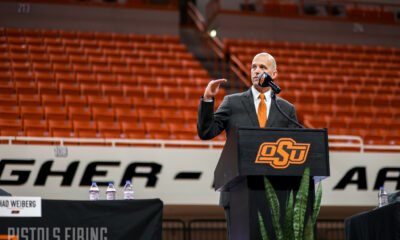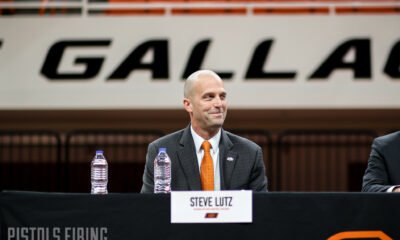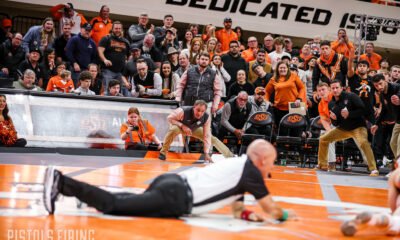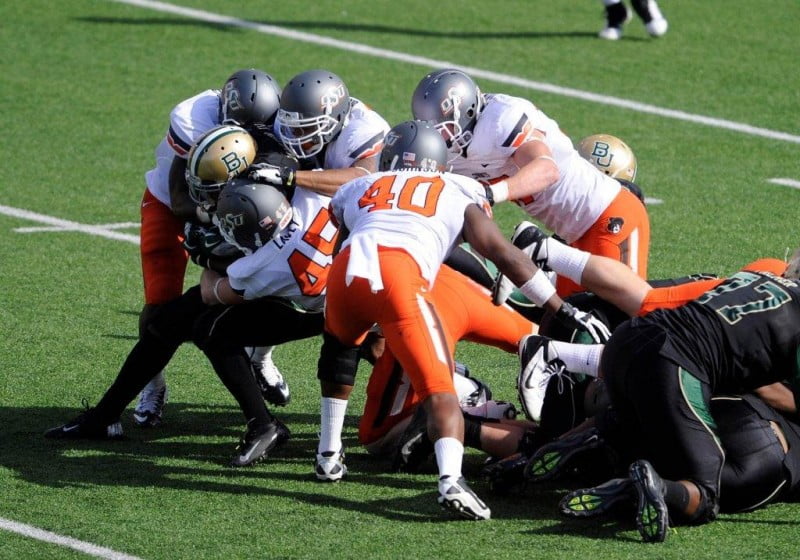Football
The 2012 Problem
OSU went from 12-1 to 7-5 in 11 months and everybody wants to know why.
Scores of people are clamoring for Bill Young’s dome on a platter. Others (myself included) cited a downturn in offensive production as the reason OSU had its worst record since 2007 (!) this year.
The real answer (as it ALWAYS does) lies somewhere in the middle.
First, let’s look at the offense[1. I threw out the bowl game since this year’s team hasn’t played in it yet].
[table id=139 /]
TDs are down a little bit but FGs are up so those come close to canceling out. We actually punted fewer times and turned it over about the same.
All in all our production per drive decreased about .22 points per drive. When you take into account that OSU averages about 14 drives per game that’s about the equivalent of a field goal per game.
Now to the much maligned defense.
[table id=140 /]
Young’s D allowed a few more TD and a few more FG but actually forced way more punts than last year. As you can see there is an….ahem….large discrepancy in number of turnovers forced[2. You might see that OSU forced more turnovers but some of these were fumbles on special teams (see Tech last year). This is only when the defense is on the field]. We’ll come back to this.
Points per drive are up exactly the same number (.22) that points per drive were down on offense.
When you add the decrease in offensive production (.22 points per drive) to the decrease in defensive production (same) and multiply that by the average number of drives by each team in an OSU game (14) you get six points per game, or one TD a game worse than 2011. The offense and defense share the blame equally here[3. Since the offense and defense regressed at exactly the same rate this year — should we fire Monken too?].
The only difference in this year? Really, the only reason OSU went 12-1 last year and 7-5 this year is that they created 24 (!) more turnovers on defense last year than this year.
Of those 39 turnovers forced last year, OSU scored 22 TDs and two field goals. That’s 11.5 points per game.
This year on 15 forced turnovers? 10 TDs and four FGs. That’s only six points per game.
Notice the difference there? 11.5 minus six is 5.5 — OSU’s decrease in production this year (as we stated earlier) was about six points. Turnovers pretty much tell the entire story.
So let’s not go for the throat of our defensive coaches before we look at the numbers. If you want to blame them for our inability to pick balls off and the luck of which way fumbles bounce, then go ahead. But not for the way the defense played overall, they were really good this year[4. Unless you want to say they sucked last year also, in which case, we have a different argument on our hands].
This system (the OSU offense plus the OSU defense) is predicated upon consistently getting in the end zone and creating turnovers on defense. You can’t throw the D out there 95 plays a game and expect them to hold teams to 20. You can, however, expect them to get you the ball back by creating turnovers.
Which they didn’t do.
Which is why we’re playing in the Heart of Dallas Bowl.

-

 Hoops5 days ago
Hoops5 days agoTwo Transfer Portal Prospects Put Oklahoma State in Top Group
-

 Wrestling5 days ago
Wrestling5 days agoOSU Wrestling: John Smith Announces Retirement
-

 Hoops5 days ago
Hoops5 days agoFormer Western Kentucky Assistant Robert Guster Follows Lutz to Stillwater
-

 Wrestling3 days ago
Wrestling3 days ago‘Made it Work’: How John Smith’s Coaching Career Began at 26 Alongside Teammate Kenny Monday







